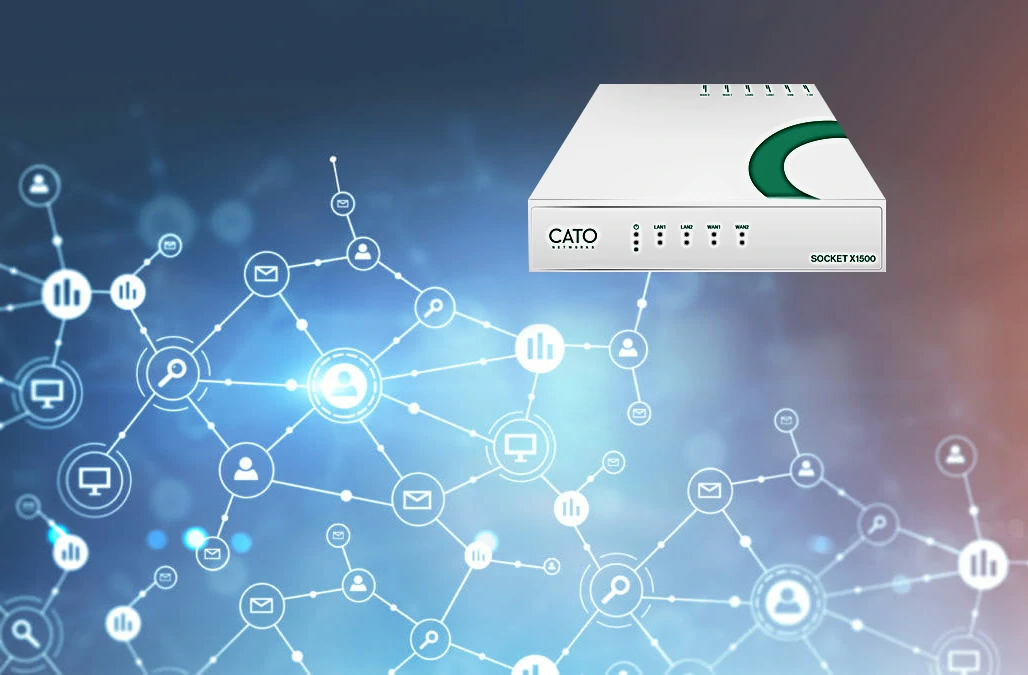Knowledge Center
Welcome to our Knowledge Center
Join our journey of network security knowledge with insightful blogs and lively Q&As. Learn, engage and give us some insights!
I would like to know more about
Select one or more of the categories below.
Thank you! Your submission has been received!
Oops! Something went wrong while submitting the form.
We found the following items just for you.

How is the lack of firewall handled in Cato Networks' solution?
SASE SD-WAN
How is the lack of firewall handled in Cato Networks' solution?
Read article
When is SASE SD-WAN not a right fit for you?
SASE SD-WAN
When is SASE SD-WAN not a right fit for you?
Read article
Is it better to outsource networking security or keep it internal?
SASE SD-WAN
Is it better to outsource networking security or keep it internal?
Read article
What are the key features and functionalities of Layer 7 firewall and LAN Segmentation in Cato Cloud's network security architecture?
SASE SD-WAN
What are the key features and functionalities of Layer 7 firewall and LAN Segmentation in Cato Cloud's network security architecture?
Read article
What is the difference between CASB and ZTNA?
SASE SD-WAN
What is the difference between CASB and ZTNA?
Read article
What are the different types of SASE vendors and which one is perfect for you?
SASE SD-WAN
What are the different types of SASE vendors and which one is perfect for you?
Read articleWhat are the advantages of using a global backbone in networking?
SASE SD-WAN
What are the advantages of using a global backbone in networking?
Read article
What is the significance of 24/7 service guarantees in network management?
Managed Network Services
What is the significance of 24/7 service guarantees in network management?
Read article
What role does digital transformation play in modern networking?
Network as a Service
What role does digital transformation play in modern networking?
Read article
What is Network Slicing in 5G, and what is the impact?
Network as a Service
What is Network Slicing in 5G, and what is the impact?
Read article
What are the Security Challenges of 5G Networks?
Internet Access
What are the Security Challenges of 5G Networks?
Read article
How Does IoT Benefit from 5G Networks?
Internet Access
How Does IoT Benefit from 5G Networks?
Read article
What is Edge Computing and How Does it Relate to 5G?
Internet Access
What is Edge Computing and How Does it Relate to 5G?
Read article
How can your team prepare for the new NIS2 directives?
SASE SD-WAN
How can your team prepare for the new NIS2 directives?
Read article
What are the two CASB deployment modes?
SASE SD-WAN
What are the two CASB deployment modes?
Read article
What is the difference between SDP users and VPN users?
SASE SD-WAN
What is the difference between SDP users and VPN users?
Read article
Can our edge appliance be configured as High Availability (HA) to prevent single point of hardware failure?
SASE SD-WAN
Can our edge appliance be configured as High Availability (HA) to prevent single point of hardware failure?
Read article
How can you maintain inventory of all your ISPs?
Managed Network Services
How can you maintain inventory of all your ISPs?
Read article
Does IPK's Silver OSS have ISP line monitoring capabilities?
Managed Network Services
Does IPK's Silver OSS have ISP line monitoring capabilities?
Read articleWhat are Cato Networks' capabilities for creating access policies for devices connected behind a socket?
SASE SD-WAN
What are Cato Networks' capabilities for creating access policies for devices connected behind a socket?
Read article
Does Cato have Native Rapid7 integration?
SASE SD-WAN
Does Cato have Native Rapid7 integration?
Read article
How does the Cato SASE Cloud establish connectivity with Azure?
SASE SD-WAN
How does the Cato SASE Cloud establish connectivity with Azure?
Read article
Does Cato Networks have different types of throughputs?
SASE SD-WAN
Does Cato Networks have different types of throughputs?
Read article
Do the Cato Socket edge SD-WAN devices support public and private IP addresses?
SASE SD-WAN
Do the Cato Socket edge SD-WAN devices support public and private IP addresses?
Read article
What are the ZTNA capabilities specific to OT networks and devices?
SASE SD-WAN
What are the ZTNA capabilities specific to OT networks and devices?
Read article
What are the key layers of protection in Cato's Intrusion Prevention System (IPS)?
SASE SD-WAN
What are the key layers of protection in Cato's Intrusion Prevention System (IPS)?
Read article
How does IPK verify if the fail-over mechanism works?
Managed Network Services
How does IPK verify if the fail-over mechanism works?
Read article
How are CPEs connected and what mechanisms are used to ensure a high-availability?
SASE SD-WAN
How are CPEs connected and what mechanisms are used to ensure a high-availability?
Read article
Does IPK provide on-site resources for customers?
Network as a Service
Does IPK provide on-site resources for customers?
Read article.jpg)
What level of support is available for managing network and security components?
Managed Network Services
What level of support is available for managing network and security components?
Read article
What do our Managed Network Services mean?
Managed Network Services
What do our Managed Network Services mean?
Read article
Does your organization need our Managed Network Services?
Managed Network Services
Does your organization need our Managed Network Services?
Read article
How does IPknowledge ensure smooth communication for Internet access delivery?
Internet Access
How does IPknowledge ensure smooth communication for Internet access delivery?
Read article
How does SASE improve network security?
SASE SD-WAN
How does SASE improve network security?
Read article
How is a site survey conducted for Internet Access?
Internet Access
How is a site survey conducted for Internet Access?
Read article
What is the difference between SSE and SASE?
SASE SD-WAN
What is the difference between SSE and SASE?
Read article
What are the types of Internet Access?
Internet Access
What are the types of Internet Access?
Read article
Why should I choose SASE (Secure Access Service Edge) SD-WAN over MPLS?
SASE SD-WAN
Why should I choose SASE (Secure Access Service Edge) SD-WAN over MPLS?
Read article
What does the Premium Partner status of Cato Networks mean for you as a customer?
IPknowledge
What does the Premium Partner status of Cato Networks mean for you as a customer?
Read article.jpg)
How can our SASE SD-WAN Price Calculator help you?
SASE SD-WAN
How can our SASE SD-WAN Price Calculator help you?
Read article
Facing a Network Management Nightmare?
Managed Network Services
Facing a Network Management Nightmare?
Read article
Replace Telco MPLS network: become agile with SD-WAN
SASE SD-WAN
Replace Telco MPLS network: become agile with SD-WAN
Read article
Connect remote workers and third parties
SASE SD-WAN
Connect remote workers and third parties
Read article
Improving application responsiveness with cloud acceleration
SASE SD-WAN
Improving application responsiveness with cloud acceleration
Read article
Eliminate Firewalls – Protect your company with cloud-based security
SASE SD-WAN
Eliminate Firewalls – Protect your company with cloud-based security
Read article
Internet access without complications
Internet Access
Internet access without complications
Read article
Advantages of CASB: Optimal grip and control over safe SaaS usage
SASE SD-WAN
Advantages of CASB: Optimal grip and control over safe SaaS usage
Read article
Structure of a budgetary internet access quote
Internet Access
Structure of a budgetary internet access quote
Read article
Network outsourcing without telco lock-in
Internet Access
Network outsourcing without telco lock-in
Read articleWhat we promise
Monthly trails & demos
You're always up-2-date
We're here to help, 24/7
We're always down to business
Ask and we'll answer
Seamless site integration
Simple solutions for big problems
Monthly trails & demos
You're always up-2-date
We're here to help, 24/7
We're always down to business
Ask and we'll answer
Seamless site integration
Simple solutions for big problems






